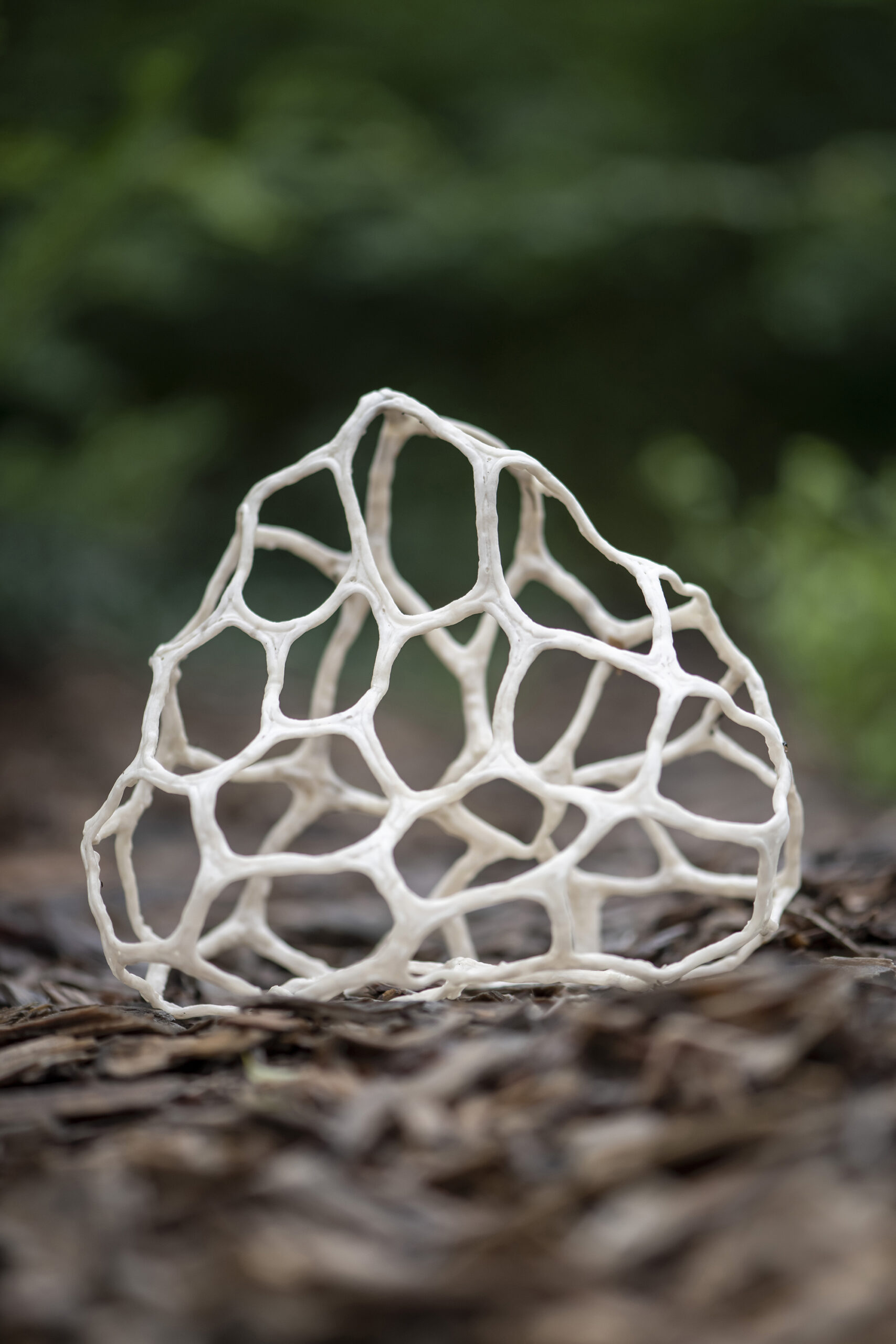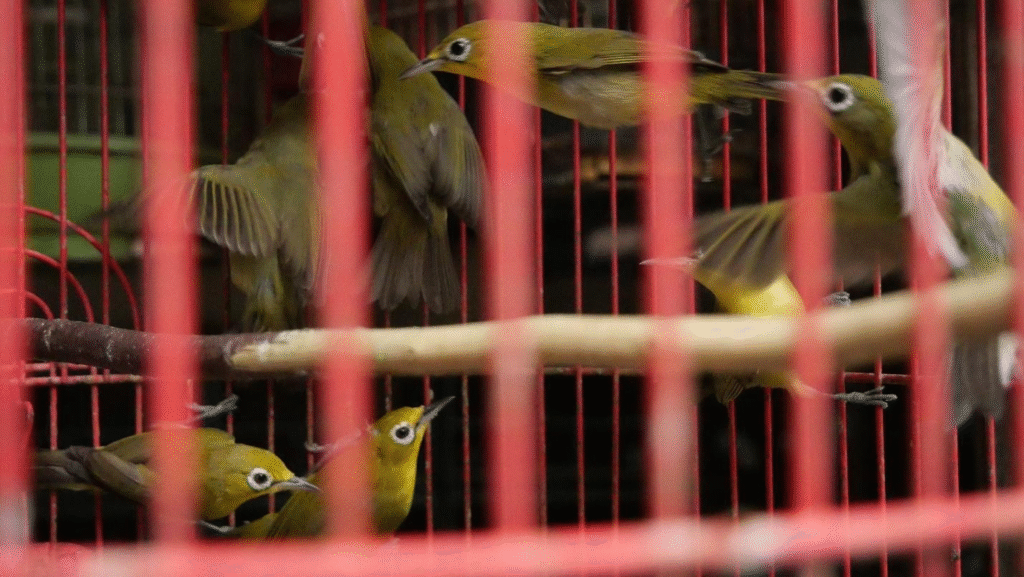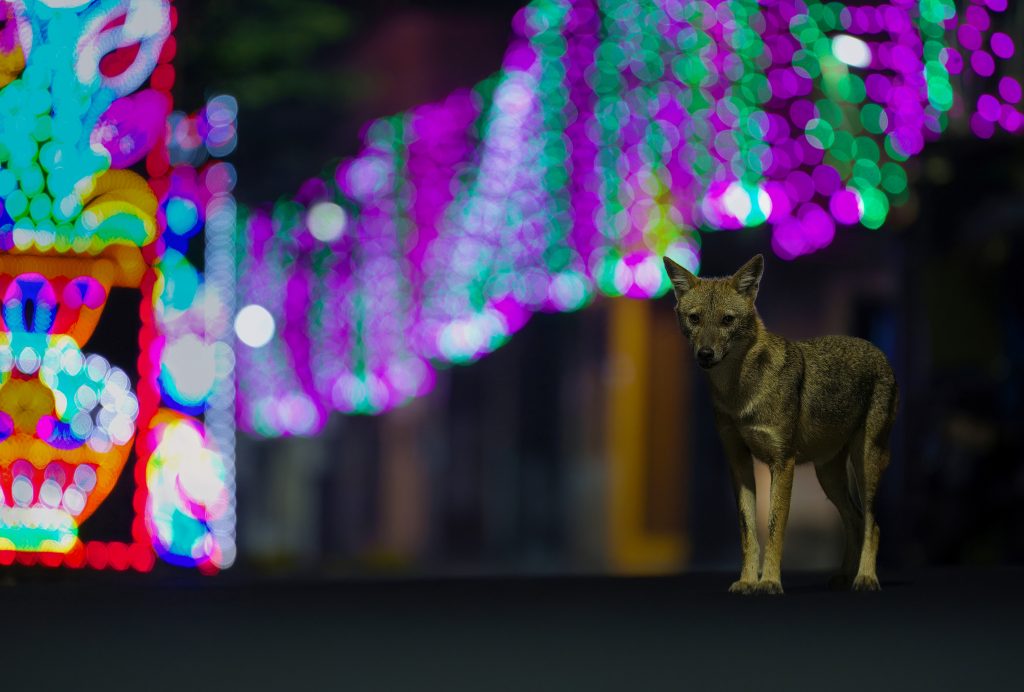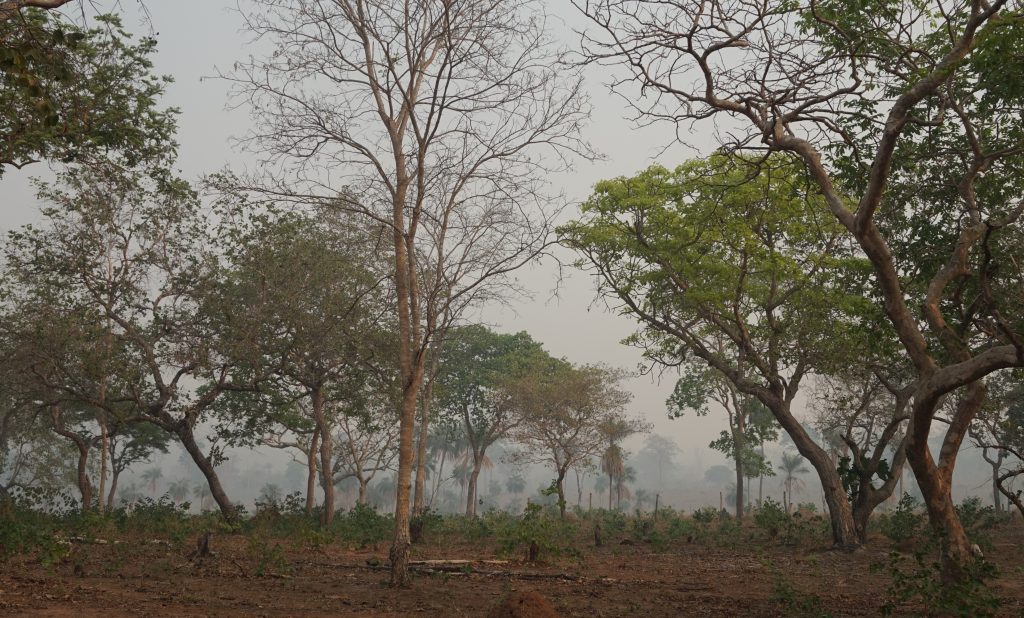Feature image: The smooth cage (Ileodictylon gracile) is among the more bizarre fungal forms
Beyond forayers and foragers, fungi are attracting new fans from many fields. From bioengineers to fashion designers, an emerging league of mycophiles is delving into the depths of kingdom Fungi. Yet for many people, fungi are unnerving. Perplexing. They do things we don’t understand and upend ideas about how we order and make sense of nature.
In my book The Allure of Fungi, I pose the question: why are fungi regarded so differently to other forms of life? Understanding historical inattention to fungi is a good starting point, but bigger questions swirl around too. What defines life? Who defines beauty? How might fungal forms challenge the notion of ‘aesthetic nature’? It’s at the nexus of the science and aesthetics of fungi that interesting possibilities arise for their conservation.
Like Homo sapiens, a single fungus species can appear in many guises. Working out who’s who is just part of the fun. As a photographer, I try to reflect a fungus in its different outfits, not so much to classify it, but to convey its character and quirk. Beyond their extraordinary beauty, it’s the strangeness of fungi, their bizarre forms and bewildering habits that might make us question how they challenge ideas about aesthetics and charisma when it comes to valuing nature.
Images of beautiful species and places have been vital to conservation and the aesthetics of nature was an important driver of the early conservation movement. To be equipped with a backbone and warm blood (mammals), showy blooms (many plants) or a melodious song and colourful plumage (some birds) is to be deemed charismatic. Such organisms have been the focus of conservation. Bad luck if you happen to be a blobfish, stinkhorn or slime mould. The perceived picturesque qualities of a place were paramount to its protection or designation as a national park.
However, as ecological knowledge has grown the need to protect areas for their ecological value has also grown, creating a tension between aesthetics and science in conservation. If we prioritise charismatic appeal over ecology, we overlook places of higher ecological value but less aesthetic appeal. Fungi that rely on the conditions and ecologies of aesthetically undervalued habitats such as coastal scrub can find themselves in trouble, because despite ecological recognition, neither coastal scrub nor the fungi who live there are particularly charismatic by conservation standards.
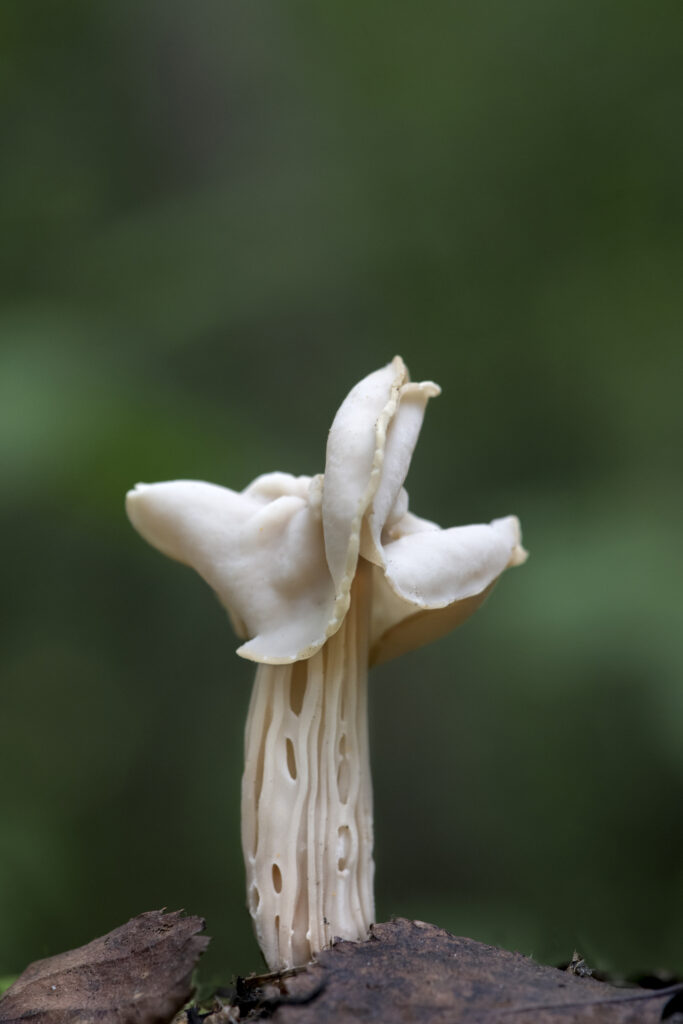
It’s hard to please everyone with the legion of considerations in conservation and land management decision-making. However, could our growing ecological knowledge affect our conservation aesthetics through increased understanding of what is vital to the future survival and resilience of species and ecosystems?
When charisma backfires
For many people, fungal forms are less familiar than those of plants and vertebrates. The unexpected or bizarre forms of fungus sporing bodies can either enthrall or repel those trying to make sense of fungi. Idiosyncratic sporing bodies such as those with eccentric forms, odours or habits sometimes appear ‘unbelievable’, inflating their ambiguity and potency. Beauty rather than bizarreness drives the aesthetics of nature. Yet these curious fungus forms can challenge us to reconsider traditional notions of beauty in nature.
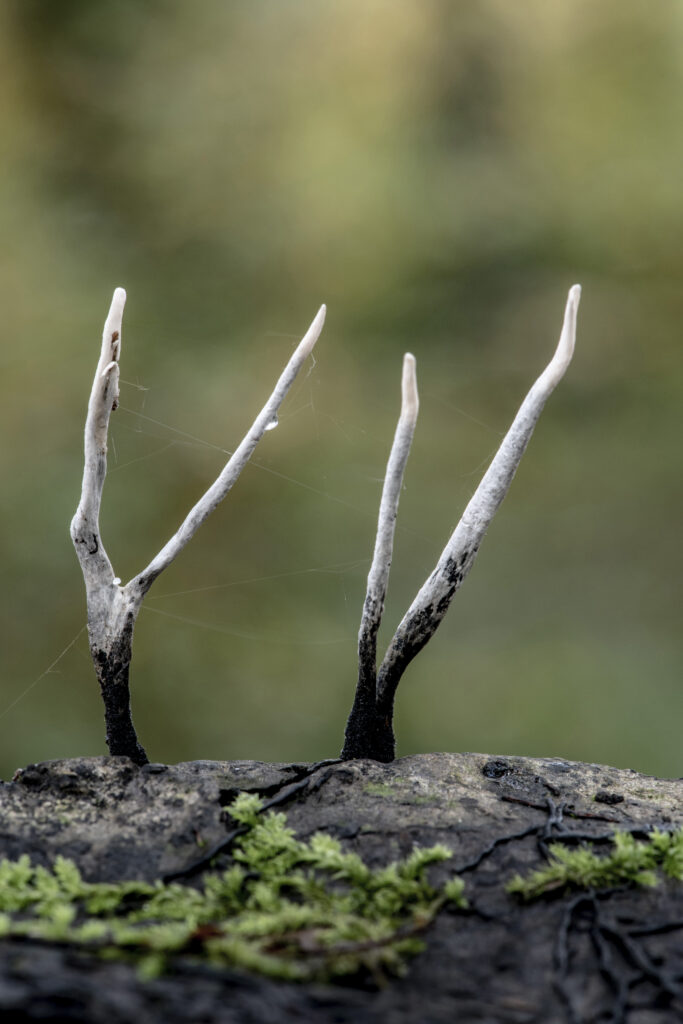
Photographs and artistic impressions of fungi, along with conservation tools such as flagship species, all help put fungi in the spotlight. Yet beauty can also come at a price. What happens when an alluring fungus becomes a potential problem? Aesthetic pleasures in one place are invasive pests in another. The reputation of a fungus can slide from virtue to invader if it relocates or ecological concepts change. Mycorrhizal1 hitchhikers have expanded their ‘natural range’ as people ferry plants around the world, and the local fungi are not always pleased.
The accompanying photographs highlight beautiful and intriguing fungi from around the world. And two stories demonstrate the tension between aesthetics and changing ecologies. Take, for example, the alluring fly agaric (Amanita muscaria). This striking species is probably the world’s most familiar and photographed fungus. Shamans have sought this northern hemisphere fungus for centuries, and plantation forestry unintentionally introduced it to the southern hemisphere. For about a century, the fly agaric seemed happy to cohabit with its host trees in southern hemisphere plantations, parks and gardens. However, more recently in southeast Australia and in New Zealand, it has hooked up with native myrtle beech trees.
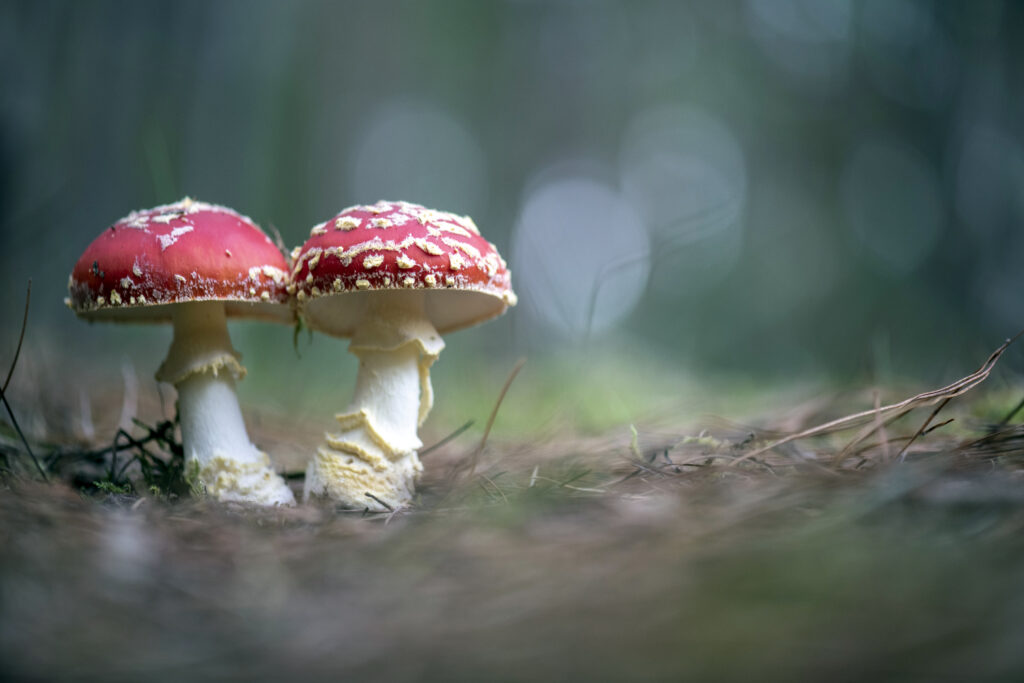
Once revered for its fairytale appeal, in Australia and New Zealand the fly agaric is toppling from its fungal pedestal and land managers now condemn it as a ‘regulated pest’. We do not yet know whether it displaces the myrtle beech’s native mycorrhizal fungus partners, but it is likely. What’s the concern? Loss of native fungi could not only diminish fungal diversity, but the myrtle beeches could become less tolerant of stress and disease. Weaker trees and fewer native fungal partners could compromise the overall resilience of these forests. Yet, as fungi become ever more popular among the public, the fly agaric’s fame surges. Its common and widespread appearance on social media, in shop windows and private collections of favourite fungus photos suggest its magnetic allure. The appeal of beauty and perhaps nostalgia for childhood stories that feature this beguiling fungus could overshadow the possible havoc playing out in the subterrain.
The orange ping-pong bat (Favolaschia calocera) is another fungal conundrum. Occurring naturally in Madagascar and parts of southern Asia, its range is expanding globally and it is settling in ruderal (disturbed) environments worldwide. Like the fly agaric, mycologists worry it’s displacing native fungi and dub it a ‘fungal weed’. However, unlike the fly agaric, which is limited to the distribution of its mycorrhizal partners, the orange-ping pong bat is a saprotroph that feeds on dead wood. In New Zealand alone, it grows on the wood of over 50 different tree species.
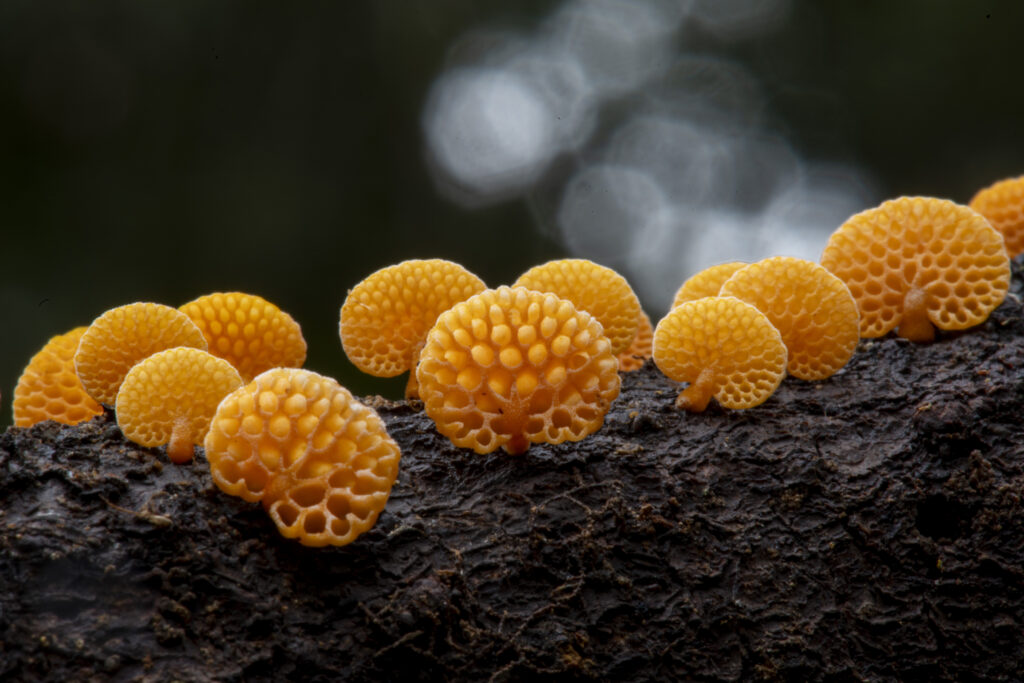
There are benefits for a fungus in having a broad diet: eats wood, will travel. The orange ping-pong bat’s sporing bodies may be tiny, but its endearing appearance further complicates the scenario. Like the fly agaric, this fungus is irresistibly attractive, with the risk it might be collected by fungal enthu-
siasts, who are then unwittingly contributing to its spread.
Both species highlight the challenge of negotiating aesthetics and ecology in conservation. As highly charismatic and highly mobile species, there’s a great need to understand their invasive potential and threat to native species. While handsome flagships can catalyse conservation, ‘charismatic invasives’ can hinder its success. Yet the endless forms most bizarre of the fungal kingdom are a reminder that they all arose for one purpose—each is an evolutionary improvisation for getting spores out into the world, to continue their existence, regardless of what Homo sapiens make of them.
Note: The ideas in this brief essay are discussed in more detail in Alison’s books, especially The Allure of Fungi and Underground Lovers.
- Mycorrhiza refers to the mutually beneficial association between a fungus and the roots of a plant. ↩︎
